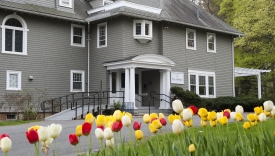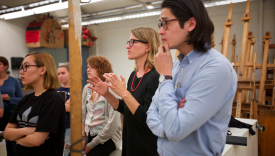Art & the History of Art 257 - Slaves, Voyagers, and Strangers: Building Colonial Cities
TU/TH | 1:00 PM - 2:20 PM
(Offered as ARHA 257, ARCH 257, and BLST 253) Creole dwellings were first erected by enslaved builders working under Diego Colón (the son of Christopher Columbus) on the island of Hispaniola. By the end of the first wave of European expansion in the early nineteenth century, the creole style existed across imperial domains in the Caribbean, North and South America, Africa, the Indian Ocean, and even Asia. We will examine the global diffusion of this architectural typology from its emergence in the Spanish Caribbean to its florescence in British and French India in the eighteenth and nineteenth centuries. In doing so, we will address buildings and towns in former Spanish, French, Dutch, Portuguese, and British colonies worldwide. Some of the urban centers that we will engage include: Kingston, Jamaica; Pondicherry, India; Cape Town, South Africa; Cartagena, Colombia; Saint-Louis, Senegal; and Macau, China. In investigating both creole structures and the cities that harbored such forms, we will think through the social and economic factors that caused buildings and urban areas to display marked continuities despite geographical and imperial distinctions.
Fall 2024: Professor Carey.
How to handle overenrollment: ARHA and ARCH majors.
Students who enroll in this course will likely encounter and be expected to engage in the following intellectual skills, modes of learning, and assessment: Emphasis on written work, readings, independent research, oral presentations, and visual analysis.


